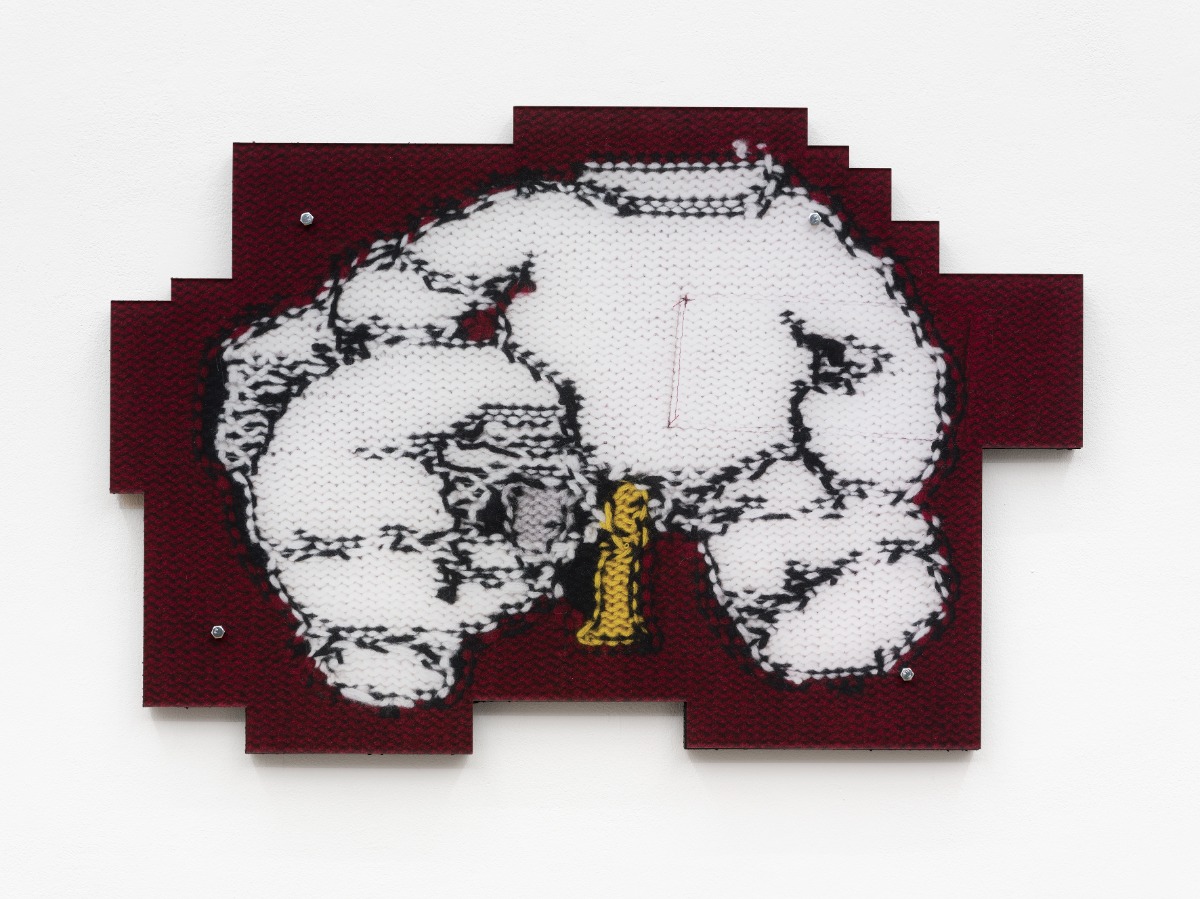
Imaginary order
Ēriks Apaļais
Tobias Kaspar: Stereotypical Artist
In 2017, when asked why he refuses to give any interviews, Swiss artist Tobias Kaspar circumvented the question by intentionally shifting the topic to the importance of friendships. Later in a conversation, Kaspar chose to appear as a ghost interviewee (the questions were answered by a stand-in actor, Dasha), presumingly metaphorizing the role of the interviewee as a mirror that reflects on constructed identities determined by meta-economies.[1]
For almost two decades now, Kaspar has dealt with the discourse of capitalism and depression and how it affects one’s identity. The ways in which Kaspar has reflected on the problem at hand has been quite dynamic. For comparison, a show of his at Silberkuppe Gallery in 2010 was titled Living Well Is the Best Revenge, whereas a show in 2019 at Galerie Lars Friedrich had the title of Why Love Hurts.
In private conversations, Kaspar has said that his artistic practice is influenced by the ideas of pop art, post-institutional critique, appropriation art, and, to some extent, by several artists who have dealt explicitly with autobiographical discourse. On the other hand, Kaspar applies traditional theories of poststructuralism by decomposing certain discourses.
Kaspar has acknowledged his fondness of the symbolist poet Stéphanne Mallarmé (1842–1898). In his series Bird Cage Covers (2019), Kaspar covered bird cages with white cotton cloth. In Mallarmean hypertextual fashion, the cotton bore silhouettes of birds, the letter “F”, and the “Tobias Kaspar” logotype. Today, when the notion of subject versus object dualism has been challenged, the use of Mallarmean language to reflect critically on artist brand-making seems questionable. However, knowing Kaspar’s fondness of the ideas of ecofeminist scholar Donna Haraway (against anthropocentrism), it may as well have been a critical comment on the consumerism of non-human species. Thus, birds are trapped in a cage and covered with modernist decor.
An interesting biographical fact is that Kaspar spent his teenage years with professional artists like Silvia Bächli, Eric Hattan and Hinrich Sachs, as his mother was an arts teacher.[1] As a young individual, Kaspar was able to get to know the worldview of certain subcultures of artists. It may be argued that this experience has made him familiar with professional success stories as well as the struggles of artists at the beginning of their careers. And perhaps it encouraged young Kaspar to think creatively about how to outsmart the system.
Kaspar’s earlier work was loaded with cynical remarks about the ways in which an artist’s brand may be managed and its value generated (e.g., Lumpy Blue Sweater, 2010). In short, how one may be tricked and how one may use tricks in order to succeed. On the other hand, in his artworks titled The Estate (Apples) and 21 Jeans (both 2019), exhibited at the Kim? Contemporary Art Centre in Riga, one could sense a shift from a commodity-unpacking and consumerism-unmasking mode to personal-epiphany-like revelations – as if Kaspar had stumbled across apples and old jeans in his country house (located in Saulkrasti), realized it appeared strangely meaningful, but still thought of this special moment as being marketable. As artist Merlin Carpenter wrote: “Value can be eked out from the very critique of capital itself”.[2]
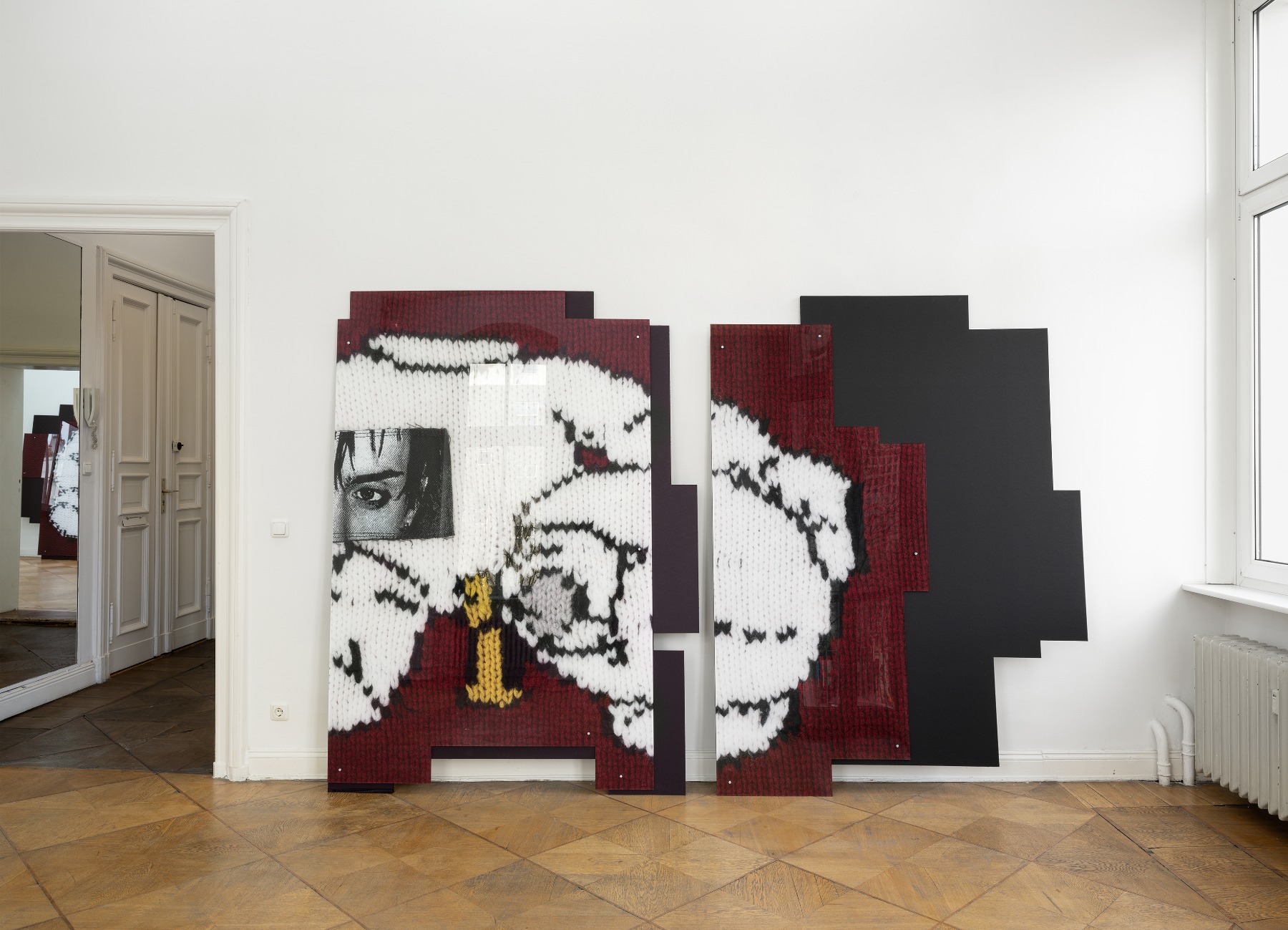
In his latest show, titled Stereotypical Artist, at Galerie Lars Friedrich, Kaspar displayed several works made up of fragmented matching parts. While large-scale diptychons were leaning against the wall in opposite gallery rooms, small-scale UV-print laser cuts were displayed classically hung on walls. In a private conversation, Kaspar revealed the process behind the works. He had ordered from the fashion brand Palm Angels a sweater with the motif of a teddy bear, which was delivered to him in a cardboard box containing honeycomb packing paper. The motif of the teddy bear on the sweater was scanned (both from the sweater’s inside and outside), and enlarged images were then printed on acrylic glass. The glass was then laser cut around the teddy bear motifs in a pixelated manner. The acrylic glass was fastened to cardboard with several screws, with paper honeycomb board sandwiched between the acrylic glass and the outer cardboard backing, thereby “raising” the image from its base.[3] While in the gallery, I thought to myself that the size of the cuts is just right – not too small, not too big; Kaspar is the perfect juggler. Scans of the outside and inside of the sweater’s teddy bear image were displayed in separate gallery areas. Kaspar explained that the cut of honeycomb board was actually guided by the outlines of the teddy bear.[3]
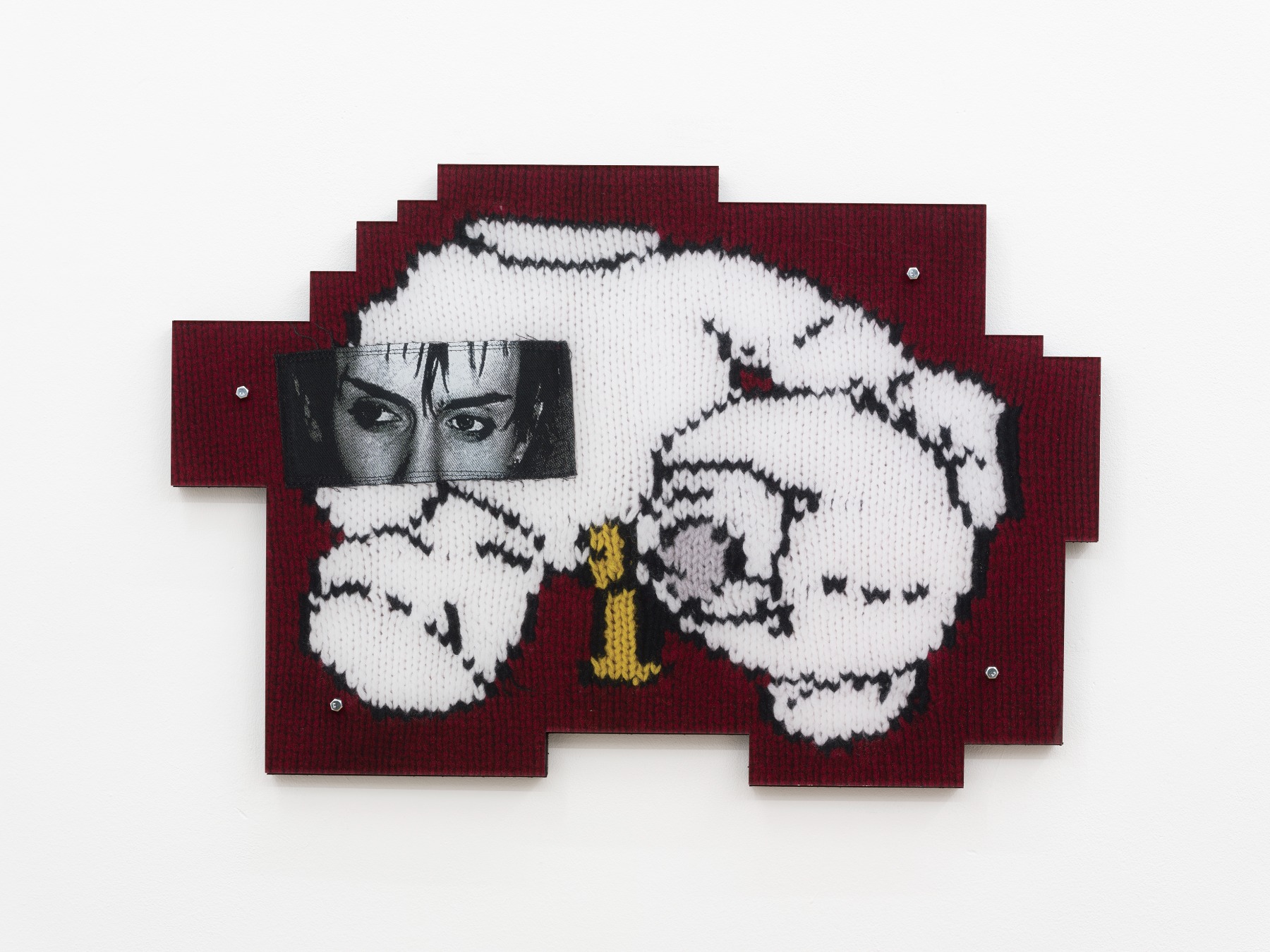
Kaspar deftly juxtaposes the concepts of the expensive and the cheap. While the materiality of the artworks suggests the ambiguous aesthetics of inexpensive furniture, the design of them looks highly expensive. When thinking about the motif of the teddy bear, one may draw a reference to the American artist Mike Kelley. (Kaspar affirmed his allusion to Kelley in a private conversation.[3]) While Kelleys’ artistic method was based on the theories of psychoanalysis, Kaspar presumably appropriates just the emblem of the teddy bear and integrates the motif in a broader system of references by poeticizing the human emotions being conditioned by commerce. As it were, Kaspar confronts the imaginary realm of commerce-dictated desirable prototypes in a Lacanian sense. The confrontation results in frustration, however, because the supposed answerer – the teddy bear – remains mum. Kaspar seems perfectly aware of this annoying situation and somehow works around it. But he also comes closer to dealing with the situation by accepting it as it is. The Palm Angels’ teddy bear is a brand much the same as “Tobias Kaspar” is a brand.
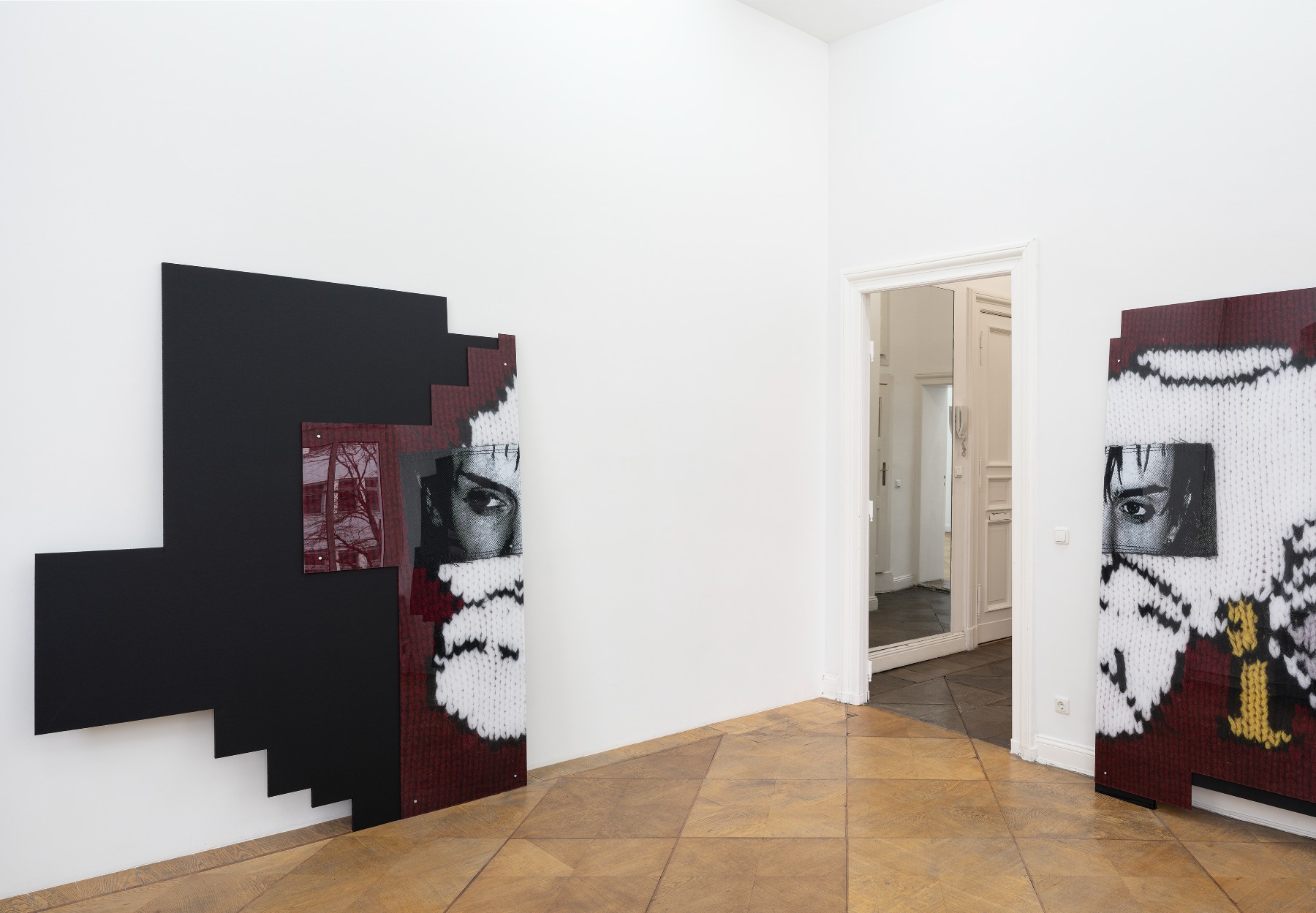
What can one do? Enjoy the little pleasures of life – walks, coffee and conversations with friends at the opening...just to remain in touch with reality, whether it is of a professional or personal sort. As Kaspar’s stand-in, the actor Dasha, said in an interview about Tobias Kaspar: “[…] although he, Tobi, as a person has nothing to do with this ‘Tobias Kaspar’ anymore.” [1]
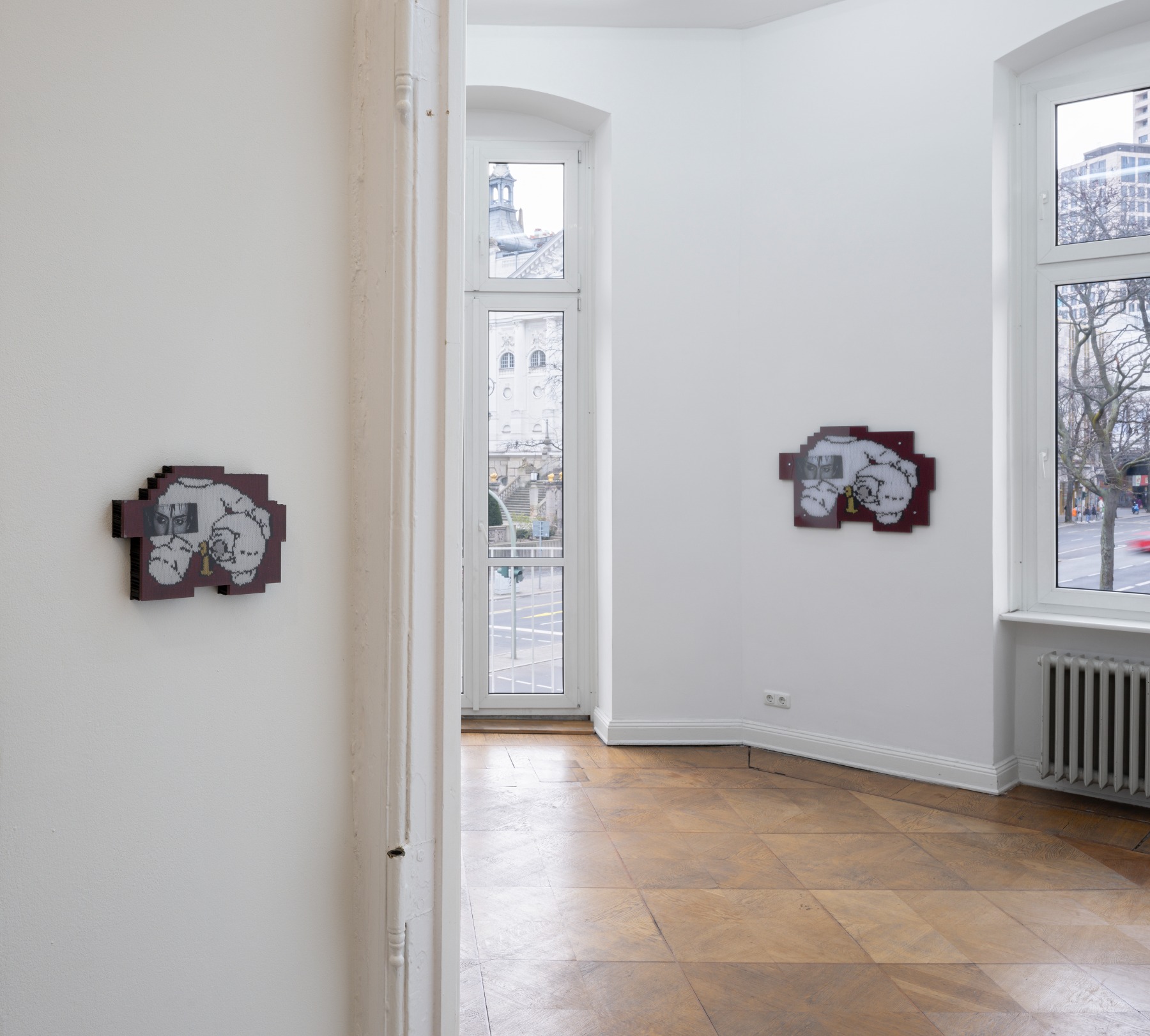
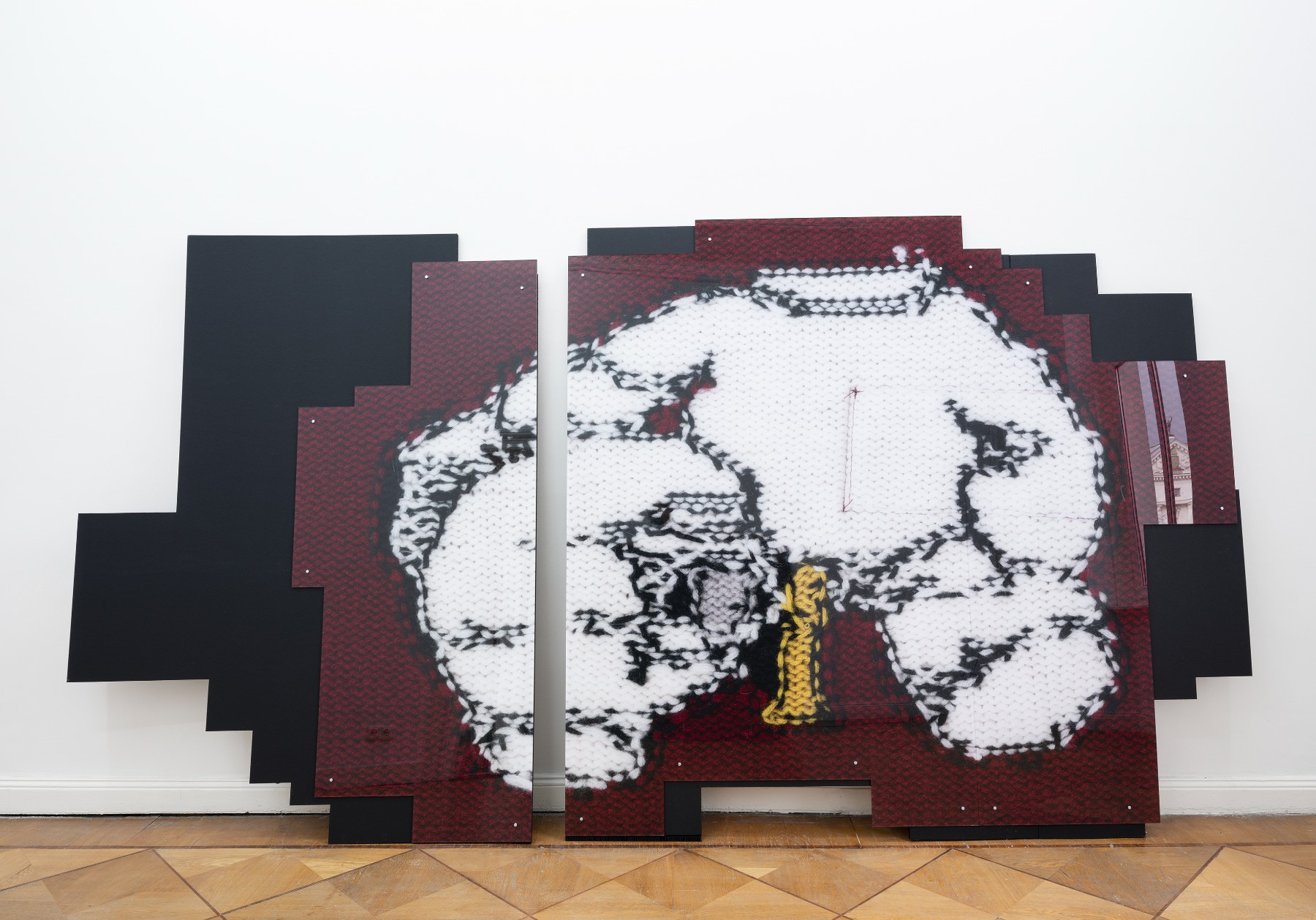
[1] www.tobiaskaspar.com/wp-content/uploads/2019/04/theseenjournal-issue-8-2019.pdf
[2] Canvases and Careers Today, Criticism and Its Markets, Sternberg Press, 2008.
[3] Private conversation with Tobias Kaspar, 8 March 2024, Berlin.